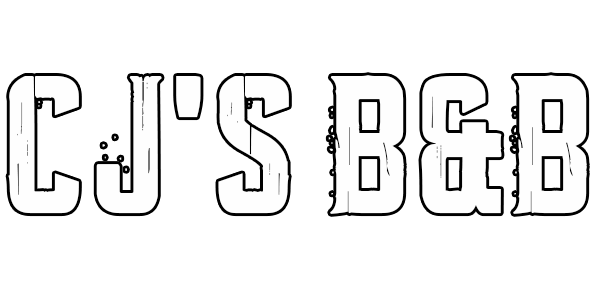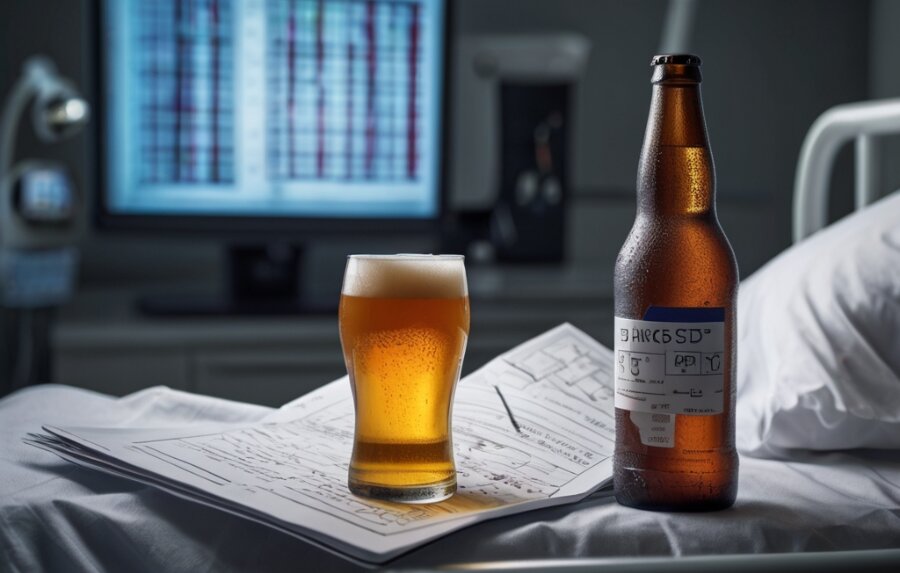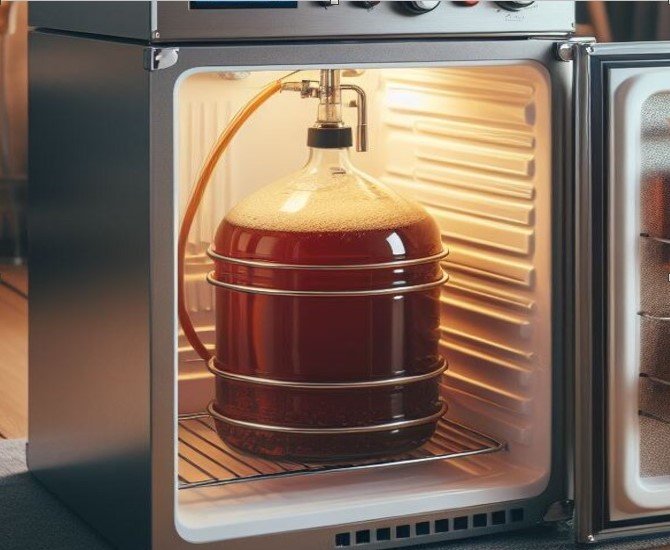Our evaluations and product assessments are conducted using a thorough and unbiased approach. Should you choose to buy any items through our provided links, we might receive a commission Read our disclosures.
Spotting Infections in Homebrew Beer
When I whipped up my first batch of homebrew beer infected with unwanted microbes, it didn’t take long to realize just how important it is to spot infections. Catching issues early can save you from a bad brew.
Infection Red Flags
Watch out for these telltale signs:
- Weird Textures or Colors: If your beer looks like an alien concoction, there’s a chance it’s infected.
- Funky Smells: A nose that doesn’t match your brew’s profile? Take note.
- Fermentation Slo-mo: If your fermentation is dragging its feet, something might be up.
Once, I noticed an oily film on my beer. It looked like tiny ice patches with jagged edges, hinting at wild yeasts or bacteria taking over. This biofilm, called a “pellicle,” can look like waves or bubbles with a web-like appearance.
| Infection Warning | Description |
|---|---|
| Weird Textures/Colors | Odd visual cues in your beer |
| Funky Smells | Strange odors that deviate from normal |
| Fermentation Slo-mo | Sluggish fermentation process |
| Oily Film | Biofilm or “pellicle” on the beer surface |
Wild Yeasts and Bacteria Types
Knowing what might be infecting your brew helps with solving the issue:
Understanding how homebrew beer infected with bacteria or wild yeasts can change the flavor profile is crucial for every brewer.
Saccharomyces: The brewer’s best friend, this yeast ferments clean beers and sometimes sours. It’s efficient and handles bitterness well.
Brettanomyces: Known as “brett,” this wild yeast gives sour beers a range of flavors—from pineapple to earthy, barnyard notes. “Brett” takes its sweet time fermenting but can work solo or with other microbes.
Lactobacillus: This bacteria turns wort sugars into lactic acid, giving a clean, sour taste. Found in beers like Berliner Weisse and Gose.
Knowing these signs and microorganisms saved me more than once. Every time I suspected trouble, I’d revisit these symptoms and troubleshoot accordingly.
Common Issues and Solutions
Brewing your own beer at home is pretty awesome, but it doesn’t always go smoothly. Here are some problems you might bump into and what you can do about them.
When Fermentation Hits a Snag
Imagine this: waiting for your beer to bubble up and… crickets. Been there, done that. Here’s what you can check:
| Problem | Why It Might Happen | Fix It This Way |
|---|---|---|
| Not fermenting | Yeast is too old or dead | Get fresh yeast or try rehydrating it before adding to your batch. |
| Fermentation dragging | It’s too chilly | Bump up the temp to what the yeast likes. |
| Fermentation stalls | Too much sugar or stressed yeast | Use yeast nutrient or give it a gentle stir to wake up settled yeast. |
Always make sure your yeast is fresh. If the bubbles are slow, a little temperature tweak can do wonders.
Fighting Mold Infections
Mold is every homebrewer’s nightmare. The first time I spotted mold on my beer, I panicked. Here’s what I did:
Spot the Mold: Fuzzy stuff isn’t your friend. Look for funky growth and trace where it might’ve touched your gear.
Scrub Like Your Life Depends on It: Sanitize everything—fermenters, airlocks, tools—leave nothing out. Cleanliness is key to mold-free beer.
Ditch Problematic Gear: If you’re using plastic fermenters and mold keeps showing up, it might be time to replace them. Scratches can hide nasties.
If mold has taken over and it’s too late to save your batch, clean up your kit thoroughly. Better safe than sorry.
Keeping Infections at Bay
Infections suck, so stop them before they start. Here’s how I keep my brew clear of trouble:
Top-Notch Sanitation: Clean all your stuff every time—before and after brewing. Pay extra attention to spigots; they’re sneaky hiding spots for bacteria.
Keep Gear in Good Shape: Use fermenters and tubing that are in good condition. Scratched tools are a breeding ground for infections.
Brewing with Care: Watch your wort cooling and fermentation like a hawk. Sterility after the boil is vital to keeping your brew free from unwanted guests.
By sticking to these rules, I’ve cut down on infections and brewed much better beer. It’s all in the details and keeping things clean. Happy brewing!

Microbes in Homebrew Beer
Brewing your own beer can be a blast, especially when you get to know the tiny helpers making it all happen. Yep, I’m talking about the microbes in your fermenter that shape your beer’s taste and aroma. Let’s break down these little critters and see how they turn your brew into a delicious concoction.
Brewer’s Yeast (Saccharomyces)
First up is Saccharomyces, better known as brewer’s yeast. Think of it as the workhorse of fermentation in most clean beers. This yeast is a powerhouse, quickly converting sugars into booze and bubbles. It’s also your go-to for sour beers. Saccharomyces works fast, handles bitterness like a champ, and keeps things tidy. Curious about how different flavors sneak in? Check out our off-flavors guide.
| Attribute | Description |
|---|---|
| Type | Yeast |
| Fermentation Speed | Fast |
| Tolerance | High IBU |
Wild Yeasts (Brettanomyces)
Then there’s Brettanomyces, or just “brett” if you like nicknames. This wild yeast is key for sour beers, adding a wild mix of flavors from fruity to funky. Trust me, you’ll notice everything from pineapple to a whiff of a horse blanket. Brett works slowly but packs a punch, and it’s a bit of a lone wolf—sometimes teaming up but perfectly fine on its own.
| Attribute | Description |
|---|---|
| Type | Wild yeast |
| Flavor Profiles | Pineapple, horse blanket, smoky |
| Fermentation Speed | Slow |
Want to dabble in wild fermentation? Brett’s your guy but handle with care, or you might end up with more funk than you bargained for.
Bacteria (Lactobacillus, Pediococcus, Acetobacter)
Now, let’s talk bacteria. These are the unsung heroes (or villains) of sour beer:
Lactobacillus (lacto): This one’s a sour beer superstar, turning your wort into lactic acid for that clean sour taste. Perfect for Berliner weisse and Gose lovers.
Pediococcus (pedio): Pedio is a slow worker but worth it. It drops the beer’s pH and can bring out a buttery flavor that Brett can clean up, making your beer more nuanced.
Acetobacter: Handle this with care. It makes acetic acid (think vinegar), which can ruin a batch. Keep the oxygen low, and Acetobacter will stay out of your way.
| Bacteria | Effect |
|---|---|
| Lactobacillus | Produces lactic acid, gives a clean sour taste |
| Pediococcus | Lowers pH, can cause buttery notes. |
| Acetobacter | Makes acetic acid, harsh vinegar taste, avoid excess oxygen |
Understanding these microbes has made my brewing adventures way smoother. Knowing what each one does helps troubleshoot issues and perfect your brew. Got worries about infections? You might find our guide on cloudy homebrew really helpful.
Cheers to brewing better beer with a little microbial help!
Causes of Infections
If you’re into homebrewing, knowing what messes up your beer is huge. Figuring out where infections come from and spotting the signs can save your brew.
Where Infections Come From
Your beer can get infected by a bunch of different things. Here are the big ones:
- Dirty Gear: If your stuff isn’t clean—think spigots that haven’t seen soap in a while, scratched-up buckets, or anything that’s not spotless—you’re asking for trouble.
- Sketchy Water: Using tap water that’s not properly filtered or sanitized can introduce bad stuff like bacteria and wild yeast.
- Bad Sanitizing: If you’re reusing old or ineffective sanitizing solutions like StarSan, leftover bacteria can sneak into your beer.
- Cross-Contamination: Mixing your brewing equipment with non-brewing items without thorough cleaning and sanitization is a recipe for disaster.
Keeping your brewing area squeaky clean will help keep those pesky microorganisms out of your beer. Check out this homebrew beer infection guide for more horror stories.
| How It Gets Infected | What It Means |
|---|---|
| Dirty Gear | Unclean spigots, scratched buckets, grimy fittings |
| Sketchy Water | Water that’s not filtered or sanitized |
| Bad Sanitizing | Reusing weak solutions like old StarSan |
| Cross-Contamination | Mixing equipment used for other purposes |
Signs Your Beer is Infected
Spotting the signs early can save your batch. Keep an eye out for:
- Weird Surface Stuff: If you see an oily slick on top with jagged edges, you’re likely dealing with wild yeast or bacteria. This is called a “pellicle” (Mr. Beer).
- Fuzzy Foes: Fuzz or weirdly colored patches on the surface means mold. Scrape it off ASAP. While it’s usually just on the surface, you really don’t want it hanging around (Mr. Beer).
- Wacky Textures or Colors: If your beer looks off from what you expected—you know, odd textures or surprise colors—there’s probably something more sinister at play (Homebrewers Association).
- Fermentation Fiascos: When your fermentation just won’t quit or goes super slo-mo, it could be because of bacterial contamination or wild yeast messing with the process.
| Sign of Infection | What It Looks Like |
|---|---|
| Weird Surface Stuff | Oily sheen and jagged edges on top |
| Fuzzy Foes | Discolored, fuzzy patches on the surface |
| Wacky Textures or Colors | Unexpected textures or colors |
| Fermentation Fiascos | Fermentation dragging on way too long |
Spot these early, and you can nip the infection in the bud. Being on the lookout for both where infections come from and their tell-tale signs means less time crying over spoiled beer and more time enjoying a cold one. Troubleshoot any potential problems like off-flavors or clarity issues so you can keep your brewing game strong.
Keeping Your Homebrew Safe from Infections
Nothing’s worse than sweating over your homebrew just to end up with a funky off-flavor. The key to dodging this disappointment? Keeping things clean and sterile. Here’s my go-to guide to keep your homebrew delicious and infection-free.
Clean, Clean, and Clean Again
A clean brewing area is your best friend. I make it second nature to follow strict cleaning and sanitizing steps. Here’s my routine laid out:
| Step | How To Do It |
|---|---|
| Wash Everything | Scrub hands, utensils, fermentation vessels, and anything that comes close to the beer. |
| Use The Right Stuff | I’m all about brewing-specific sanitizers like StarSan or Iodophor. |
| Separate Stations | Keep raw ingredients and finished beer away from each other to avoid cross-contamination. |
| Handle Gently | Use soft cloths on plastic equipment to avoid scratches, ‘cause scratches harbor germs (Mr. Beer). |
Sure, infections can creep in even with the best practices. Pesky microbes like Lactobacillus and Pediococcus can spoil your beer with sour notes or even a dreaded “buttered popcorn” flavor. Been there, done that—never again (Beer Maverick).
Sterilizing Equipment: Non-Negotiable
Sterilizing your gear is your first line of defense against these little spoilers. Every bottle, keg, and fermentation vessel is immaculate before I use it.
| Gear | Cleaning How-To |
|---|---|
| Fermentation Vessels | Clean them well and soak them in sanitizer. |
| Bottles and Kegs | A good soak in StarSan does the trick. |
| Fittings and Tubes | Check for scratches or wear. If they’re dinged up, I chuck ’em. |
Spotless equipment isn’t just for the brewing cellar—your packaging area needs it too (Beer and Brewing). Unclean spigots and dirty fittings cost me a batch once, so now I inspect everything like a hawk.
Bottom Line
Invest the time in cleaning and sterilizing. It pays off when you crack open a bottle of your crisp, refreshing homebrew. And for those times when something tastes off, I’ve got a stash of trusty resources on off-flavors in homebrew to help me troubleshoot.
Brewing isn’t just a hobby; it’s a little slice of perfection you’ve crafted—so keep it clean, keep it sterile, and sip proudly!
Nailing That Perfect Brew Without Funky Bugs
As someone who loves turning hops and malts into liquid gold, I’ve learned the hard way that keeping my beer safe from nasty microbes is key. If you’re a fellow homebrewer, stick around for some pointers on keeping those bugs at bay and your beer tasting awesome.
Keep It Clean, Seriously!
Cleanliness isn’t just close to godliness; it’s the law of the land for us brewers. Here’s how I keep my setup spotless:
- Scrub Like There’s No Tomorrow: I make sure every bit of my equipment, from fermenters to caps, gets a good scrub with some reliable detergent. No leftover gunk allowed!
- Sanitize Like You Mean It: After cleaning, I hit everything with a sanitizer that’s safe for food, like StarSan. Never reuse the same old sanitizing solution; that’s asking for trouble (Beer Maverick).
- Tidy Up Your Space: I keep my brewing area free from dust and pests. Surfaces are clean, and there’s zero room for sneaky contaminants.
Paying attention to these little things helps me dodge loads of brewing headaches.
Tricks to Stop Infections Before They Start
Even with all the cleaning, sometimes bugs sneak in. Here’s how I keep them out:
| Technique | How It Helps |
|---|---|
| Sterile Equipment All the Way | Sterilizing bottles and kegs cuts down on contamination chances. |
| Routine Equipment Checks | Regularly checking for scratches and replacing damaged gear helps me stay safe. |
| Watch Those Metrics | Keeping an eye on pH and temperature during fermentation ensures no creepy crawlies thrive (Beer Maverick). |
| Good Water Matters | Using clean, contaminant-free water, especially when topping off, is non-negotiable. |
These hacks keep problems at bay most of the time. Still, infections happen. When they do, I’m quick to spot them and hunt down the source. Sorting out microbial spoilage has made my brewing game strong. Check out more on avoiding off-flavors here.
Keep brewing, keep it clean, and here’s to no funky bugs in your beer!








